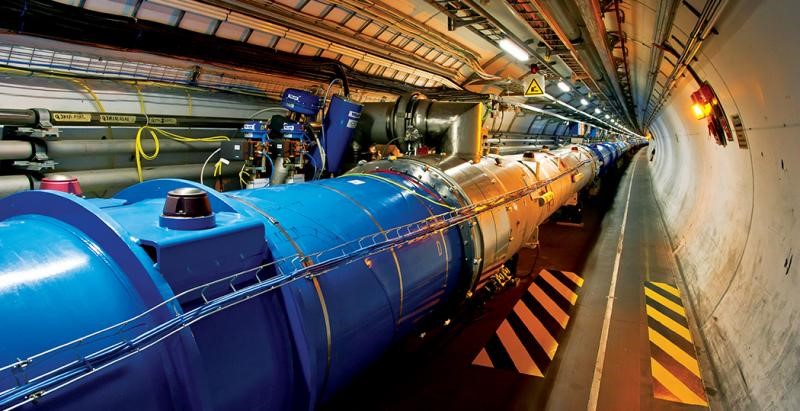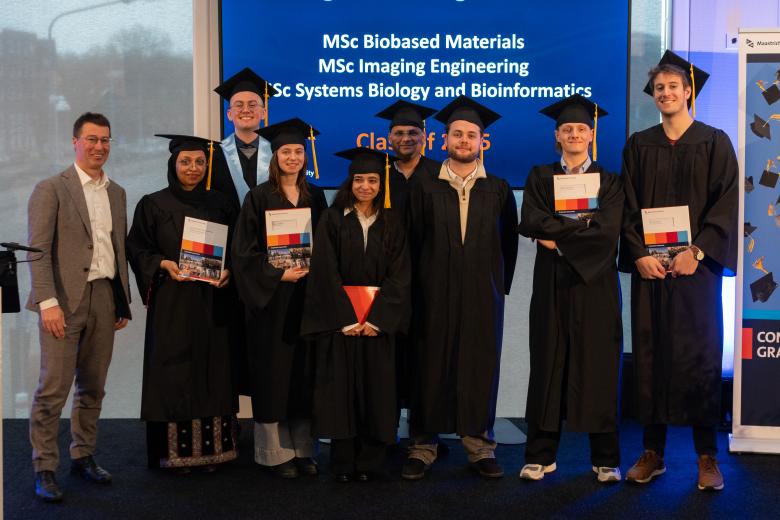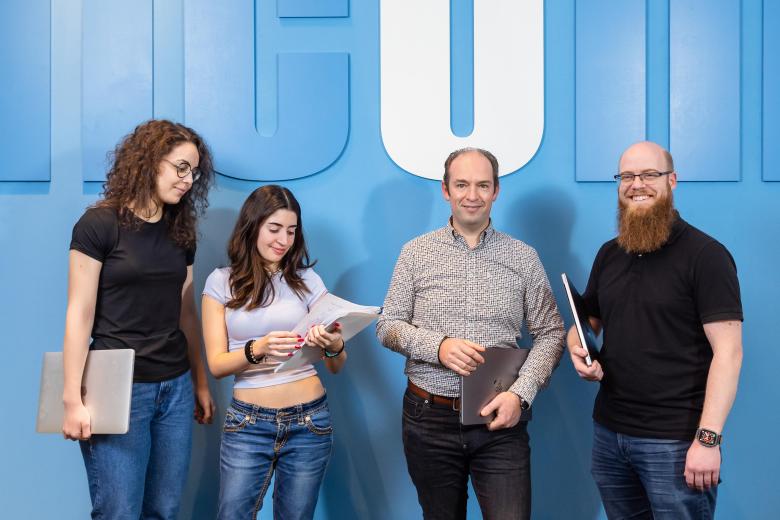Maastricht Science Programme involved in particle physics break-through
Maastricht Science Programme is involved in the LHCb collaboration at CERN which has seen, for the first time, the matter–antimatter asymmetry, known as CP violation. This finding is sure to make it into the textbooks of particle physics.
What is CP violation?
Jacco de Vries, scientist at Nikhef and Maastricht Science Programme explains: “CP violation has to do with a difference between matter and anti-matter. In the early universe (the big bang), we think that as much matter as antimatter must have been made. And I mean: really 50/50, mathematical equality. Like plus and a minus, which together cancel each other back to zero, just like there was nothing before the big bang".

Today, however, there is a lot of matter. Everything we see in the universe, from the earth to distant stars, is made from matter. But all antimatter has disappeared…how is this possible? “We don't know that” says de Vries. “But somewhere in nature, there must be a difference, an asymmetry, between matter and antimatter. We call such a difference CP violation. And by measuring this, we get a better idea why all that antimatter has disappeared into the universe.”
CP violation has a long history in particle physics. It was discovered in the 'kaon' system in the 60’s and has led to theoretical Nobel Prizes. It wasn’t until 1987 that another system was discovered in which this CP violation can happen: the Bd meson system. “In 2013 our experiment, LHCb, found a third system (Bs mesons) and now finally we have found a fourth system, that of D-mesons.” De Vries continues: ”The latter was already predicted, but for all kinds of theoretical reasons it had to be very small and that made it very difficult to find.”
LHCb is an experiment set up to explore what happened after the Big Bang that allowed matter to survive and build the Universe we inhabit today.
What has MSP got to do with this discovery?
De Vries lights up: “Because MSP made all sorts of contributions in all kinds of areas within the LHCb experiment. For example, we have contributed in the form of data collection and improving algorithms for general use.”
De Vries enthusiasm is contagious: “In the last project period, six students figured out how we can better recognise particles in LHCb with machine learning. And a cool side note: Simon (a MSP honour student) and I are working on the same type of mesons, you know: from the newly discovered fourth system. However, we are not measuring CP violation, but we are looking into the production of these particles. This in turn provides useful input for the theoretical models.”
Jacco de Vries has written his PhD thesis on CP violation in both Bd and Bs systems. And Maastricht University is now an official partner of Nikhef, where a large group of LHCb people study all these types of processes (including contributions to this specific analysis: so from CP violation in D-mesons).
Relevant links
Read the press release by CERN
Photo credits: CERN
Also read
-
Ron Heeren appointed fellow of the Netherlands Academy of Engineering
Professor Ron Heeren, distinguished university professor at Maastricht University (UM) and director of the Maastricht MultiModal Molecular Imaging Institute (M4i), was appointed as a fellow of the Netherlands Academy of Engineering (NAE) on Thursday 11 December.
-
UM builds open education and digital literacy into BKO/UTQ
Maastricht University is taking a practical step to support early-career teachers: open education and digital literacy will be built more firmly into the BKO/UTQ.
-
Companies unlock Maastricht University’s hidden talent
@Work students serve as a bridge between academia and industry, helping companies recognise the university’s strengths. “We’re a hidden gem that’s gradually being discovered, as more and more people learn that we are one of the largest academic data science and AI programmes in the Netherlands